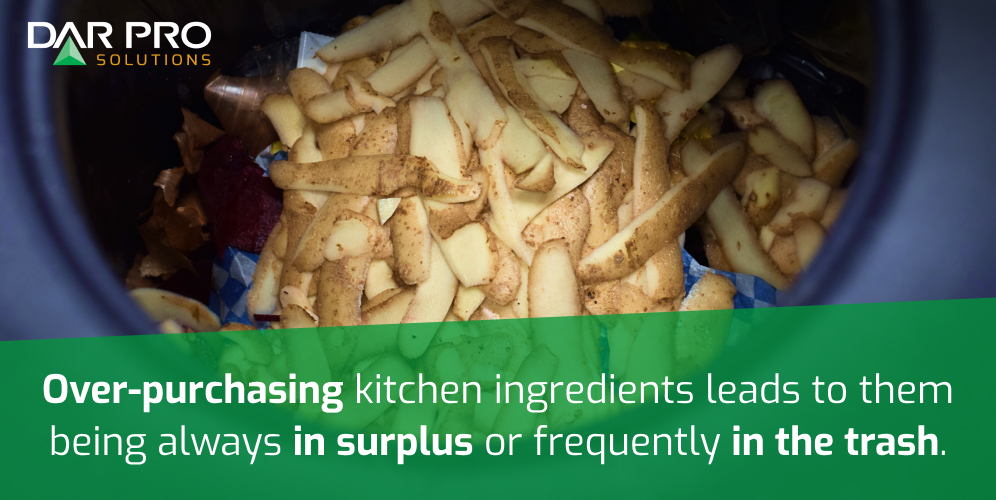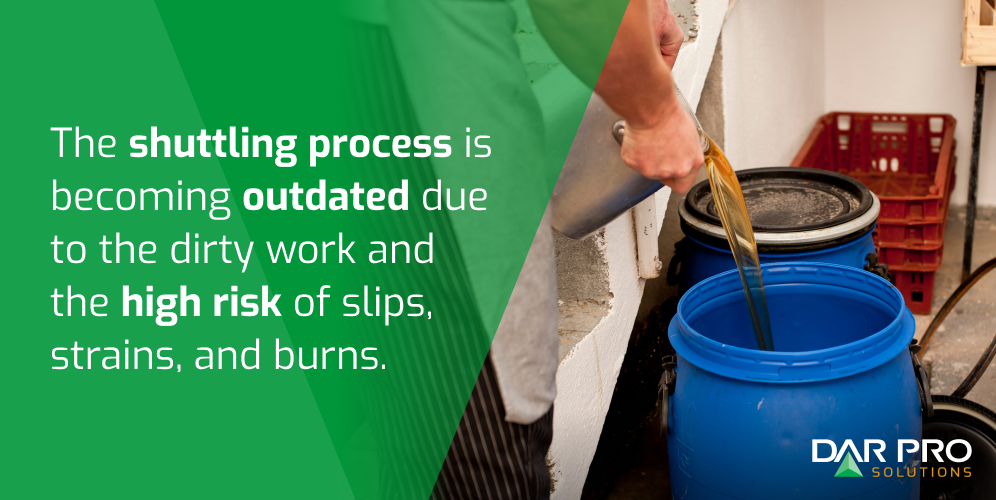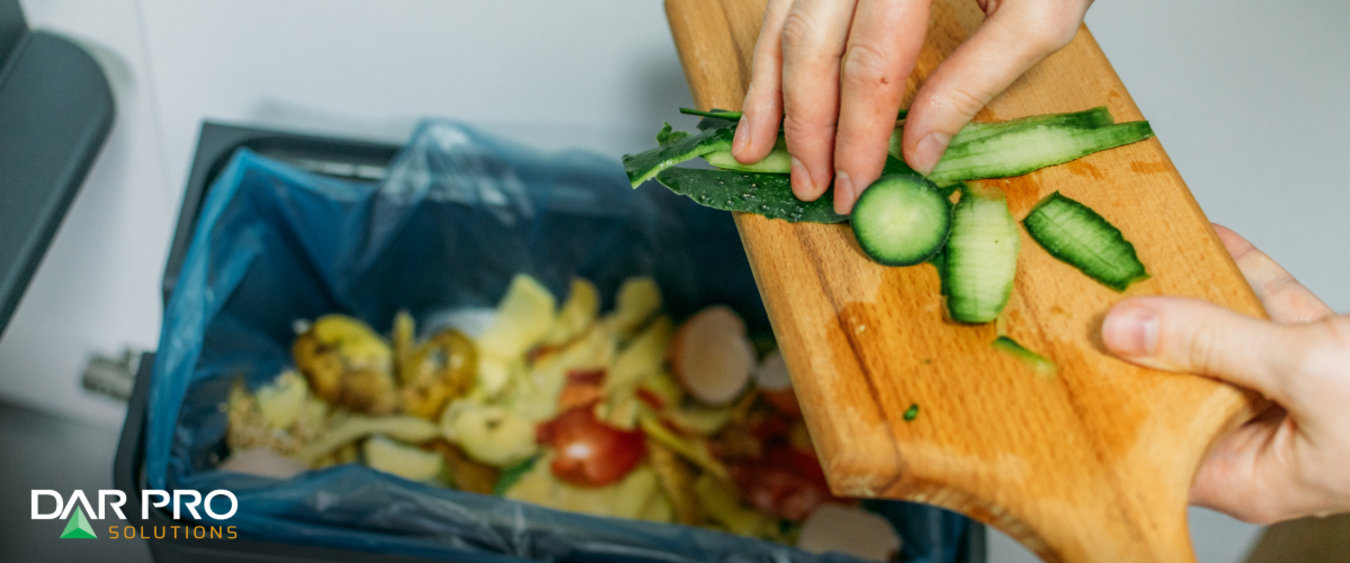To date, more and more industries are becoming more socially and environmentally conscious. By reducing food waste to a minimum, these industries are working towards sustainable and environmentally-safe solutions to help protect food chains, keep animals safe, and benefit those who work in the food and beverage industries. In doing so, the restaurants are also saving money.
Reducing food waste may sound complicated, but it is easier than you might think. By reducing unnecessary waste and cost, you are contributing to the longevity of your establishment and the planet.
We talk a lot about food waste at DAR PRO Solutions, especially as it pertains to restaurants. We’re passionate about helping our customers find ways to make the world a greener place while serving great food and improving their bottom line. The following are strategies to reduce food waste and increase profitability in your restaurant.
Strategy 1: Start Small
Cost-cutting begins with the inventory. For example, you may notice that some of your kitchen ingredients are always in surplus or frequently in the trash. If that’s the case, you are over-purchasing them.
Bulk purchasing might seem like a cost-effective practice. After all, you get more for less, right? However, any real benefit is lost when that order gets thrown out due to spoilage or lack of use. Start small by implementing these easy-to-follow guidelines.

First In, First Out (FIFO)
FIFO means prepped food is labeled and dated, and older foods are stored in front or on top for first use. This system allows food to be found quicker and used more efficiently. To ensure food is used before its expiration date, consume the earliest purchased food items or those whose shelf life is the shortest.
Above all, avoid stocking up on large amounts of produce. No matter how “fresh” they appear, fruits and vegetables are known for their short shelf life and temperature sensitivity. The same goes for meats and dairy products. Carefully analyze your restaurant’s food requirements and create a realistic inventory plan.
Minimize Ingredients
To make your restaurant more sustainable, implement a seasonal menu. Not only is this a practical choice, customers love it too (and are often willing to spend more on it). By changing menu items based on availability, you can serve the freshest possible produce at its peak. Creating dishes based on availability also limits more expensive ingredients that are out of season.
If this isn’t a realistic possibility for your establishment, start by minimizing the ingredients in your dishes. If you have minimally utilized inventory, consider retooling your menu to eliminate the item or use it in other dishes. Finding different ways to use food items can be a great way to ensure you aren’t throwing out excess inventory.
Shrink Portion Sizes
It is increasingly common for establishments to serve larger-than-average portions. The assumption is that clients will pay more for “more.” But why are 55% of edible dishes left behind at the restaurant if this is the case?
Large portions aren’t necessarily what customers want, especially when so many people watch their weight and calorie intake. When entrees are too big, uneaten ones get thrown in the trash. The easiest way to eliminate this problem is by cutting back on portion sizes. Instead of over-serving, focus on flavor and attractive presentation.
Strategy 2: Work with Your Bottom Line
Recipe and menu pricing is critical to maintaining your restaurant’s bottom line. If you are not earning proper margins on the menu, your restaurant will not survive—even with stellar customer service, the best atmosphere, or the tastiest dishes. Break down your cost-per-plate and price menu items accordingly to protect your bottom line.
Many restaurant operators initially cost out their menus and are confident of the margins. However, if the price margins change a year later, the restaurant loses money due to rising ingredients costs.
Regular review of inventory costs allows you to react by adjusting pricing, sourcing less expensive suppliers, or adjusting portion sizes. However, we recommend you follow two additional guidelines.

Cut Out Dishes That Sell Poorly
Invest in tools that allow you to project sales levels accurately. You can make data-driven purchasing decisions using historical sales data from comparable periods. Accurate sales numbers enable you to make smarter purchases and optimize food waste reduction.
Sale numbers also highlight dishes that sell poorly or are unprofitable. Remember, just because a dish is popular doesn’t always mean it is profitable. Likewise, a popular dish that uses a food item not found elsewhere on the menu will only lose you money. Remove foods with low-profit potential and replace them with something fruitful.
Stretch the Longevity of Your Cooking Oil
The price of fryer oil continues to rise. Being prepared with proactive measures to extend the frying life of your cooking oil helps you cut costs and improve your bottom line.
Filtration rids your-already used oil of solid food particles and other debris mixed in. Some fryers have built-in filtration systems, while others don’t. If yours does not, it will need to be done manually through a strainer or a portable filter machine.
Another process that will save you money on oil costs, in the long run, is using a fry pod. FreshFry pods have been proven to extend oil life drastically and are readily available for purchase. Remember that you should still regularly filter your oil and that these pods are an additional filtering measure.
Strategy 3: Expand
Traditionally, after it was used for frying, cooking oil and grease were drained into caddies or buckets, removed from the kitchen by staff, and allowed to cool. Once cool, the oil and grease were bagged and discarded in the trash.
While shuttling keeps excessive grease from going down the drain, it’s also dirty work with a high risk of slips, strains, and burns. Nowadays, the shuttling process is becoming outdated. Across the industry, commercial kitchens have realized that some of the most dramatic process improvements they can make are in oil management.

UCO Systems
How you handle your used cooking oil (UCO) can affect your internal operations and shape how your customers see you. One of the by-products of running a busy restaurant is UCO, but most restaurant owners don’t have time to haggle over it.
DAR PRO’s reliable, end-to-end services make restaurant oil collection and recycling a nonissue. We use state-of-the-art grease management equipment to handle your material responsibly and thoroughly while following governmental and environmental regulations. As a DAR PRO customer, you can count on our professionally trained, uniformed, and licensed service personnel.
Modern, Energy-Saving Equipment
As one of the world’s premier UCO recycling companies, DAR PRO’s operational efficiency furthers our customer commitment. Onboard logistics and computerized routing equip our modern transportation fleet. We schedule fuel-efficient routes and arrive on-site when service is due, reducing our carbon footprint and minimizing unnecessary trucks in your parking lot.
DAR PRO Solutions offers a variety of used cooking oil storage containers, including fully automated systems that provide zero contact with grease. Our expertise and customizable equipment options improve your kitchen’s safety, reduce mess, and relieve you of UCO handling.
Recycling Programs
Is your restaurant doing its part when it comes to recycling? With more and more consumers in the United States making a restaurant choice based on eco-friendly practices, perhaps it’s time to formulate a recycling plan to ensure your store’s efforts are consistent.
DAR PRO Solutions helps reduce a restaurant’s carbon footprint by diverting cooking oil and meat waste from landfills and repurposing it into valuable new resources. The waste material we collect is processed at our plants across the country before being sent to Diamond Green Diesel for renewable diesel production.
Contact us today to see how running an environmentally-friendly restaurant can earn your clients’ appreciation.
Contact Sales
For customer service inquiries call our toll free number (855) 327-7761
By submitting this form I agree to the privacy policy including the usage of contact details to contact me for marketing purposes.
